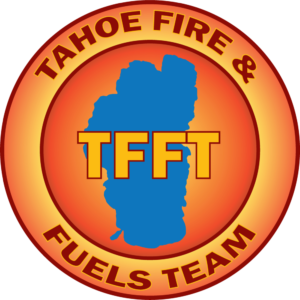Prescribed fire operations continue at Lake Tahoe
March 30th, 2021Prescribed fire operations continue at Lake Tahoe
Contact: USDA Forest Service, Lisa Herron 530-721-3898
LAKE TAHOE, Calif./Nev., March 29, 2021 – Prescribed fire operations will continue this week in the Lake Tahoe Basin, conditions and weather permitting. Smoke may be visible. A map with project locations and detailed information is available for viewing at tahoelivingwithfire.com. Sign-up to receive email prescribed fire notifications by sending a request to pa_ltbmu@fs.fed.us.
Prescribed fires are a vital tool for restoring forest health to fire-adapted ecosystems. Fire is a natural and essential process in the Sierra Nevada that cannot be duplicated by thinning operations alone. Prescribed fires mimic natural, low intensity fires which burn mainly on the forest floor, consuming excess vegetation (fuels), such as small trees and shrubs, allowing mature trees to remain intact. These fires not only reduce ground fuels, they help trees increase resistance to insects and disease leading to a healthier, more resilient forest over time.
Prescribed fire managers use different methods to reintroduce low intensity fire back into our forests that include pile burning and understory burning. Pile burning is intended to remove excess fuels (branches, limbs and stumps) that can feed unwanted wildfires and involves burning slash piles that are constructed by hand and mechanical equipment. Understory burning is low intensity prescribed fire that takes place on the ground (the understory) rather than pile burning. Understory burning uses a controlled application of fire to remove excess vegetation under specific environmental conditions that allow fire to be confined to a predetermined area. Understory burning produces fire behavior and fire characteristics required to attain planned fire and resource management objectives.
Winter months brings cooler temperatures and precipitation, which are ideal for conducting prescribed fire operations. Each operation follows a specialized prescribed fire burn plan, which considers temperature, humidity, wind, moisture of the vegetation, and conditions for the dispersal of smoke. All this information is used to decide when and where to burn.
Smoke from prescribed fire operations is normal and may continue for several days after an ignition depending on the project size and environmental conditions. Prescribed fire smoke is generally less intense and of much shorter duration than smoke produced by wildland fires.
Agencies coordinate closely with local, county and state air pollution control districts and monitor weather conditions carefully prior to prescribed fire ignitions. They wait for favorable conditions that will carry smoke up and disperse it away from sensitive areas. Crews also conduct test burns before igniting a larger area, to verify how effectively materials are consumed and how smoke will travel.
Before prescribed fire operations are conducted, agencies post road signs around areas affected by prescribed fire, send email notifications and update the local fire information line maintained by the USDA Forest Service at 530-543-2816. The TFFT gives as much advance notice as possible before burning, but some operations may be conducted on short notice due to the small window of opportunity to conduct these operations.
To learn more about the benefits of prescribed fire, visit https://tahoe.livingwithfire.info/get-informed/understanding-fire/.
###

